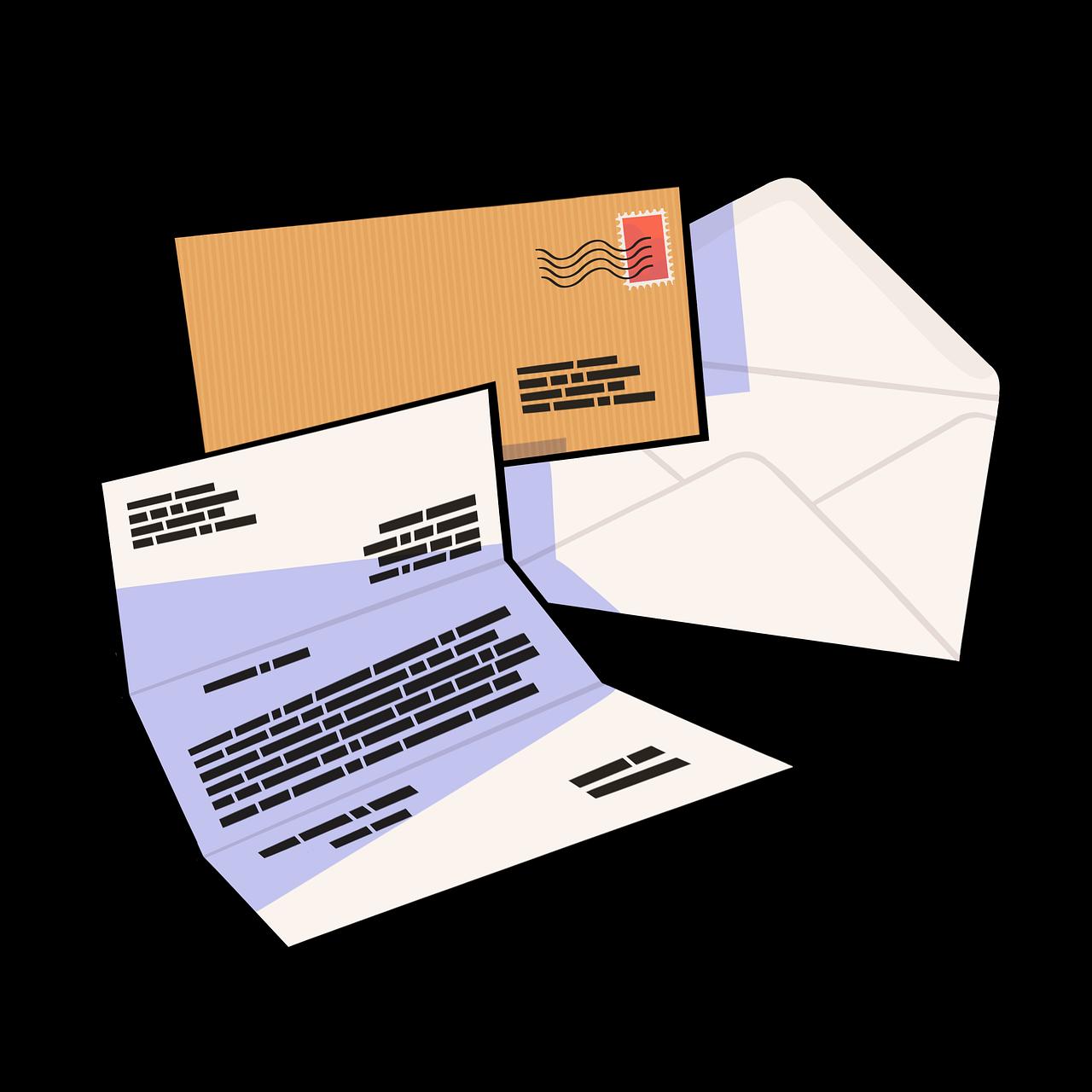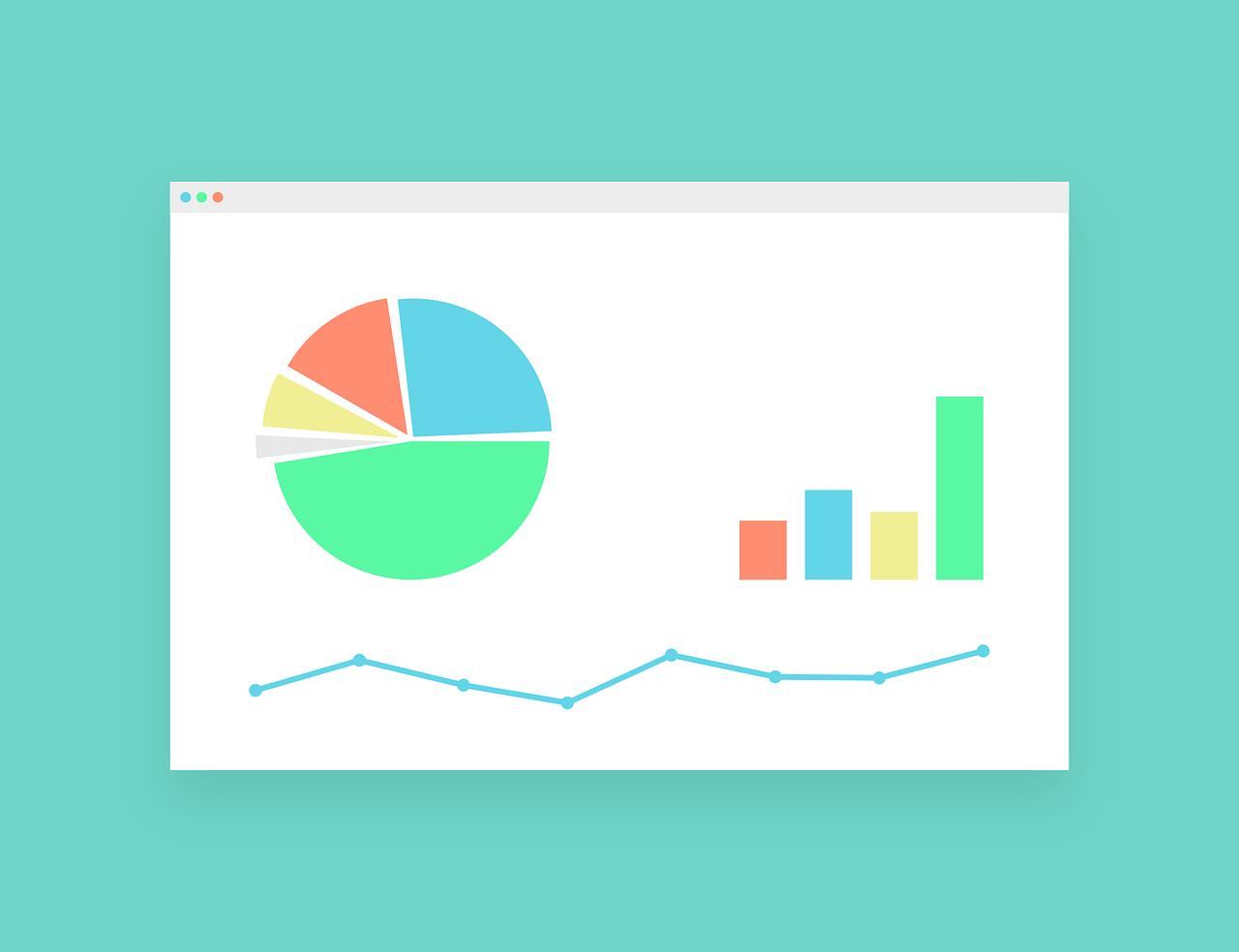Transforming Your Business: Best Practices for Email Marketing

In the evolving world of marketing, companies have undergone a significant shift from traditional methods to embracing digital practices, with email marketing emerging as a powerhouse tool. The dictionary of email marketing is vast and specific, intended to help businesses carve out a reach towards potential clientele, ensuring enhanced customer engagement. Herein rests the importance of defining SMART (Specific, Measurable, Achievable, Relevant, Time-bound) goals to ensure campaigns are effective and meaningful. As we navigate through the important aspects of building email lists lawfully, creating personalized content, designing responsive email templates, to leveraging automation tools and adhering to privacy laws, this blog serves as your guide to understanding and implementing the best practices for email marketing. It will share invaluable insights on how these transformative strategies can optimize your interaction rates, conversion rates, and overall business growth.
Understanding the Role of Email Marketing
Email marketing plays a crucial role in digitally transforming your business. It is a strategic tool for reaching out to potential customers and maintaining an effective customer relationship. A well-executed email campaign can connect your business directly to your customers' inboxes, offering targeted communication and promotional opportunities. A study by McKinsey & Company found that email is 40 times more effective at acquiring new customers than Facebook or Twitter. It not only demonstrates the wide reach of email marketing but also its effectiveness in driving business growth.
But email marketing isn't just about sending sales emails. It's about fostering relationships. A report from Forrester shows that consumers who purchase products through email tend to spend 138% more. It's an indication of email's potential to foster a strong, trusting relationship between customers and your brand. Kellogg's, for instance, utilized email marketing in an innovative way that contributed to a 72% increased click-through rate and a 53% rise in hard opens. By understanding each customer's individual journey, Kellogg's was able to develop a more personalized and highly engaging approach. Therefore, the role of email marketing is two-fold - it not only serves as a direct channel for selling products but also as a channel to engage with customers and build long-lasting relationships.
Establish Clear Marketing Goals

Implementing effective email marketing strategies requires you to first set clear, defined goals. These goals must be Specific, Measurable, Achievable, Relevant, and Time-Bound (SMART). For example, a specific goal might be to generate a particular number of new leads in the next quarter through email marketing, or increasing your email open rate by a certain percentage within a specified timeframe. Having measurable and specific objectives keeps your marketing efforts focused and promotes an organized and systematic approach to achieving business objectives.
Successful goal setting involves ensuring that your objectives are achievable and relevant. This means understanding what is realistic for your business, given your available resources and industry dynamics. As a pro tip, you can use data from past email marketing campaigns for a more accurate benchmark. Likewise, ensuring goals are relevant requires scrutinizing how the outcome of specific objectives aligns with broader marketing and business goals. For instance, if your overall business goal is to ramp up sales in a new region, an aligning marketing goal could be to increase email subscriptions in that particular region.
Finally, adhering to time boundaries is just as crucial for goal setting. Decide on the timeline in which you want to achieve your goals and maintain consistent progress tracking to assess if you're meeting your target milestones. Consider this scenario, if you want to get 10000 email subscriptions within six months, a delay in progress in the first month would require adjustments in the following months to meet the overall goal. Remember, while setting SMART goals, it's also important to remain flexible and adapt to changes as necessary—for instance, changing market conditions or customer behavior trends.
Building and Segmenting Your Email List
The challenge of putting together a comprehensive email list begins with the ethical collection of email addresses. Businesses must gather these contacts in a lawful manner, which typically involves options such as opt-in newsletters or online forms on the company website. These are reliable and legal methods that uphold the trust of your customers, a crucial element in any business relationship. Your subscribers need to recognize the value in sharing their email addresses with your business. An exclusive discount or early access to new products upon sign-up, for example, come across as powerful incentives.
Once the email list begins to form, it's essential to remember that not all subscribers are created equal. This is where segmentation comes in. Companies can segment their email list according to a variety of factors like customer demographics, their purchasing behaviors, and their previous interactions with your emails. Segmenting your list allows for more personalized communication, which in turn, can lead to a higher engagement rate. For ‘Tony's Organic Store’, the email for customers who've purchased vegan products before would differ from those for customers purchasing gluten-free items.
Adopting a targeted marketing approach is key to increasing your return on investment (ROI). Companies need to utilize the distinct segments to create personalized emails that resonate with the unique interests of each group. For example, a technology retailer would market gaming equipment very differently to gamers than to customers interested in office equipment.
Ultimately, building and maintaining an email list is a dynamic process. Businesses need to constantly adjust and update their lists to include new subscribers and to remove inactive ones. This helps maintain a high-quality list that readily leads to conversions and satisfied customers. Companies can look at it as a living document that must adapt and evolve with the business, ready to meet the changing demands of the digital marketplace.
Tailoring Content to Meet Subscriber Needs

Creating content that is engaging, interesting, and relatable is the heart of effective email marketing. Businesses should focus on personalizing their content based on their subscriber needs – it's not just what the company wants to sell, but providing information and products that the recipient wants to buy. After all, as Dale Carnegie once said, "People are interested in people who are interested in them."
To create content that resonates with different types of subscribers, one good practice is segmentation. Segment your subscribers according to their preferences, buying behaviors or where they are in the sales funnel. For example, a subscriber who frequently buys sports equipment from your e-commerce store would likely be interested in a newsletter featuring latest running shoe models, while a first-time visitor might need an introduction to what your store offers.
Development of buyer personas can greatly help in this personalized content creation. This includes detailed profiles of your typical customers, including their needs, interests and pain points. Using this data, you can craft emails that speak directly to these individuals, making your emails feel less like generic corporate messages, and more like thoughtful advice from a trusted friend.
One strategy for getting data for personalized content is through forms and surveys. Asking customers about their preferences when they sign up to your list gives you data to work with right from the start. As Alex Turnbull, CEO of Groove, says, "We've found that the double whammy of 'asking' for feedback, then 'showing' them we've acted on it is a powerful motivator."
Lasting engagement is established through consistently providing value in your emails. Consistently provide recipients with helpful tips or insights related to their interests or your products. Sharing stories, real-life testimonials, or case studies can also greatly increase your subscribers’ engagement. A well-crafted, subscriber-focused email strategy can effectively turn casual subscribers into loyal customers.
Effective Use of Call to Action
The power of a well-placed, clear, and persuasive Call To Action (CTA) is irrefutable in the realm of email marketing. It's a critical component that actively nudges the reader towards the intended action-be it subscribing, buying, sharing or more. Without a strong CTA, an email can fail to achieve its desired effect, even if the content is otherwise engaging. Marketing strategy experts like Neil Patel argue that, "A business without a call-to-action is a business without a cause."
Your CTA, in addition to being concise and clear, should be strategically placed within your email to ensure maximum efficacy. Multiple case studies, including those done by American copywriting expert Joanna Wiebe, shows CTAs placed in a prominent, hard-to-ignore spot increases the rate of engagement. Her research demonstrates that a well-placed CTA could lift clicks by as much as 74%.
Phrasing is equally important, and your CTA should speak directly to a specific action you want the audience to undertake. For example, "Subscribe Now", "Start Your Free Trial Today", or "Get Your Free Ebook" are direct, compelling, and effectively encourage swift action. In a similar vein, ride-sharing giant Uber’s highly effective CTA – “Ride with Uber” – is a great example of how a simple yet direct command can persuade users to take action.
A persuasive CTA does not operate in isolation. It must align seamlessly with the overall narrative and context of the email content. This connection becomes more vital considering Mailchimp's data stating that segmented, targeted emails have a 100.95% higher click rate compared to non-segmented ones. It's therefore wise to tailor your CTAs to match the specific interests or preferences of your segmented lists, driving home the point that you understand what your subscribers want, need, and value.
Importance of Personalization in Email Marketing

Personalization in email marketing is a crucial factor in increasing engagement and conversion rates. Customization of content caters to individual subscriber preferences, making emails more attractive and relevant to them. For instance, many successful businesses adopt email personalization strategies like using the customer's first name, their purchase history, or browsing behavior to create tailored email content. Amazon is a prime example of this approach, where they effectively use browsing and buying data to recommend personalized items in their emails.
Implementing personalization in emails doesn't have to be daunting. Companies can use past purchase data, demographic information, and browsing behavior to decide on the products or services to feature in emails. Personalization extends beyond just using a recipient's name; it can also involve sending out birthday discounts, remembering past purchases, or targeted geographic information for exclusive local deals. For instance, Airbnb sends customized recommendations based on the recipient's past searches or bookings, enhancing the value of the email to the recipient and increasing the likelihood of a click-through.
The goal of personalization is to make each recipient feel valued and understood, ultimately increasing user engagement and conversion rates. It creates a sense of exclusivity and intimacy, making the recipient feel that the email was crafted specifically for them, boosting both open rates and click rates. Therefore, though it may require a more detailed approach than generic emails, the outcome is often worth the investment. As stated by Campaign Monitor, businesses that use personalization in their email campaigns notice a 26% increase in their open rates.
Responsive and Mobile-Friendly Design
In the era of digitalization, it is crucial to create email templates that adapt effortlessly to various screen sizes. This means ensuring that your email is legible, accessible, and visually appealing across all types of devices — from desktop to tablet to mobile phone. Catering to this difference in viewing platforms enables an optimized user experience, encouraging interaction and ultimately, conversion.
An excellent example of this is the global e-commerce giant, Amazon, which ensures their marketing emails are designed to be easily readable on any device size. This user-friendly approach keeps the focus on their content, regardless of how their subscribers choose to access it. To achieve a similar impact, marketers can use responsive design tools that automatically adjust email templates to the screen size of the user's device, enhancing readability and interaction. Ignoring such crucial elements can lead to poor user experiences, causing readers to delete the email or unsubscribe from the list entirely. Hence, it is safe to assert that having a responsive and mobile-friendly design plays a substantial role in improving email engagement rates.
Best Time and Frequency for Sending Emails

Determining the best time and frequency to send emails can markedly amplify open and conversion rates for your business. This requires a deep understanding of not just your business, but also your audience's habits. For instance, studies by Experian have shown that emails sent between 8:00 pm to midnight usually have the best open and click-through rates. This doesn't necessarily mean these timings work best for every business. It's about finding what works for your specific audience. Similarly, the frequency of emails is another crucial aspect to consider. A rule of thumb is not to bombard your audience with an excess of emails, a behavior that most often results in unsubscriptions. Studies indicate the sweet spot tends to be around one to four emails per month. Companies like HubSpot have demonstrated up to a 32% increase in email engagement when the frequency was fine-tuned to their audience's habits. Therefore, special attention should be paid to understanding your audience's preferences, carrying out consistent testing for different timings and frequency, and fine-tuning your email send-outs based on these findings. Always remember, the aim here is to maintain a balance — ensuring visibility and engagement, without overwhelming your subscribers.
Rigorously Testing Your Email Campaigns
In the realm of email marketing, pre-launch testing is a critical step you should never overlook. To ensure the maximum effectiveness of your campaigns, meticulously conducting A/B testing is vital. A/B testing involves sending two variations of an email to different segments of your audience to consider which version performs better. This testing can help determine the most effective aspects of your email, from subject lines and call-to-actions to images and colors, and everything in between. Notably, Microsoft saw a 27% increase in subscriptions from their Office 365 program after testing the impact of incentive offers, a prime example of the power of A/B testing in practice.
Furthermore, A/B testing is best practiced consistently to optimize results continually. Email marketing is not a stagnant process; it requires ongoing analysis and adjustments to stay hitched with evolving market dynamics and audience preferences. For instance, imagine an email variant performed favourably in one of your campaigns that drove significant click-through rates. You might decide to use the same format for future emails, but it's still essential to continue testing. Audiences may respond differently to certain designs or CTAs over time due to various factors like changing consumer behaviour or market trends.
Finally, the deployment of robust A/B testing strategies can substantially improve your email campaign performance. However, the key lies in interpreting the data accurately and implementing changes promptly based on the outcomes, which requires a systematic approach and keen attention to detail. A more nuanced analysis could reveal that a specific presentation layout is favored by mobile device users, while desktop users prefer another, implying the need for segmentation. Email testing can be a complex process, but its significant potential return on investment makes the thorough examination worth the effort.
Analyzing and Understanding Email Metrics

Dissecting email metrics is crucial in assessing the effectiveness of email marketing strategies. By closely watching specific measurements and attributions, businesses can glean valuable insights into what is working and where improvements are needed. A diverse range of factors, such as email open rates, click-through rates, conversion rates, and bounce rates, offers a comprehensive view of the campaign performance. An increase in open rates, for example, might indicate an effective subject line, whereas a high conversion rate suggests the content is effectively driving the desired action.
Analytical tools play a vital role in monitoring these email marketing metrics. There are numerous commercial tools available that assist in assessing how campaign strategies align with business objectives. In the hands of skilled marketers, these tools not only measure performance but also help predict future trends, providing invaluable data for forecasting and planning. For instance, regularly tracking unopened emails can highlight potential issues with email delivery and content relevance, resulting in actionable insights for improved campaign strategy.
To track and understand email metrics effectively, businesses should establish benchmarks that align with their marketing objectives. These benchmarks can help evaluate campaigns against industry standards or previous campaign performances. For example, if a business records a bounce rate that is consistently above industry average, they may need to revisit their email list segmentation or the quality of their email content. This approach ensures that the collected data is used to its maximum potential, leading to optimized strategies.
However, understanding these metrics is only beneficial if put to proper use. Metrics should serve as a guide or compass, directing the future course of a campaign and helping make informed decisions. As the notable marketing expert, Peter Drucker, once quoted, "What gets measured gets managed." Therefore, businesses should constantly fine-tune their strategies based on their metric analysis. For example, if metrics show a decrease in engagement with a particular segment of the email list, addressing this subset with unique content or special offers might improve their interaction. Hence, analyzing and understanding email metrics—the compass—can effectively set the course for a successful email marketing campaign.
Role of Automation in Email Marketing
The importance of automation in email marketing cannot be overstated. It introduces precision and efficiency, eliminating the possibility of human error in your campaigns. Automation tools do much of the work, allowing your team to focus on strategic aspects of your campaigns. For instance, automated tools can help manage subscription lists, send out welcome emails, and track the email performance in real-time. It's just like setting a sophisticated “out-of-office” email; you determine the parameters and the system streamlines the task.
Efficiency aside, automation enhances personalization by segmenting your email list based on various criteria, such as previous shopping behavior, demographic data, or specific link clicks in past correspondence. This level of segmentation ensures the right message gets to the right person at the right time, enhancing user engagement and relevance of content. For example, think of an e-commerce business cross-selling products based on past purchases or a restaurant sending birthday discount codes to patrons. Benefits are also reaped via automated follow-ups, especially cart abandonment reminders, which can boost conversions. Thus, automation not just saves time but also offers opportunities to enhance the customer journey, boosting your campaign effectiveness.
Strategic Follow-Ups: Key to Customer Engagement

Targeted follow-up emails play a critical role in keeping a customer interested and engaged with your brand. These type of emails serve as a highly effective digital handshake after a transaction or interaction, crucial in cultivating long-term relationships with your audience. It's important to note that follow-up emails need to be precisely aimed and timed to ensure you're not overstepping your familiarity with the customer. For instance, following a purchase, a thank you email with a special offer can go a long way in impressing a customer. Alternatively, after a webinar or workshop, a follow-up email that elucidates the key takeaways can benefit the recipient and fuel a fruitful conversation. It's not just about remembering to send out these emails, but it's equally important to have them personalized and relevant. Companies like Amazon and Spotify have mastered this strategy. Their carefully timed, relevant follow-up emails based on user activity have significantly boosted their engagement rates. Thus, integrating strategic follow-ups into your email marketing strategy can lead to higher customer retention and engagement.
Re-Engaging Inactive Subscribers
In any successful email marketing strategy, it's crucial to make efforts to re-engage inactive subscribers. One such effective method for re-engagement is implementing win-back campaigns. This strategy can encourage previous active subscribers who have lost interest or have become dormant to reengage with the company's emails and potentially, the company as a whole. Utilizing various tactics and enticing deals, businesses can spark a renewed sense of interest among inactive subscribers, thereby increasing overall engagement rates.
Win-back campaigns can employ different techniques, frequently offering exclusive deals or promotions designed to rekindle subscriber’s interest. For instance, companies might offer special discounts or exclusive access to new products. Some brands even go as far as offering vouchers or freebies as a token to show they value their subscribers and would love to have them back.
In addition to special offers, companies can also include personalized messages that give these campaigns a more human touch. Messages such as "We Miss You" or "We’d Love to have you back" can resonate with inactive subscribers on a deeper level, thus motivating them to interact with the company’s emails again. Personalization in email content not only adds a human element but also makes each recipient feel genuinely valued by the company.
Another best practice when trying to re-engage inactive subscribers is to use reminder emails. A friendly reminder about their previous interactions with the company, or about an abandoned cart for instance, can spark their interest, reminding them of why they subscribed in the first place. Brands can subtly bring to the subscriber's notice how they've missed out on valuable content or deals during their inactive period.
Remember, when implementing any of these strategies, it’s crucial to track the success rates through metrics such as open rates or click-through rates, and to adapt campaigns accordingly. This not only measures the efficacy of your win-back campaigns but also helps to optimize future endeavours to rejuvenate inactive subscribers.
Maintaining Email List Hygiene

The process of maintaining email list hygiene is crucial for effective email marketing. This involves consistently cleaning up and updating your email lists to foster authentic and active engagement. A well-maintained email list filters out inactive subscribers, preventing spam complaints or unopened emails from weakening the impact of your marketing efforts.
One practical way to maintain email list hygiene is by periodically sending re-engagement or “win-back” campaigns. These are designed to prompt an inactive user back into engagement or verify their willingness to stay connected. For instance, a personalized email reminding subscribers they haven't interacted with your content in a while along with an incentive to return, like a special discount, can be effective in reawakening interest.
In the interest of optimal list hygiene, it’s also essential to respect and comply with key privacy regulations like the General Data Protection Regulation (GDPR). Failure to abide by such laws not only hurts your credibility as a marketer but also attracts severe penalties. Ensure you have the explicit consent of your subscribers to send them marketing emails. Adopting such best practices for email marketing ensures a healthy list, reducing bounce rates, and improving overall deliverability. This eventually leads to more meaningful interactions with your subscribers, strengthening your business in the process.
Respecting and Adhering to Privacy Laws
The cornerstone to ethical email marketing rests not just in respecting user privacy but actively adhering to privacy laws, such as the historical General Data Protection Regulation (GDPR). A deep respect for user privacy is essential as it allows for effective email communication built on trust and mutual understanding. Fostering such a relationship enhances the user experience, increases the chances of conversions, and in turn transforms businesses effectively.
Following the legislations, like GDPR, not only keeps your practices ethical but helps in developing a deeper bond of trust with your subscribers. These subscribers are aware they're not risking their privacy, further strengthening your rapport and potential conversions.
Moreover, it's not simply about adhering to the laws for the sake of regulations – it’s considering what these laws represent and appreciating the responsibility every business holds. It's about pivoting to a digital space that values user privacy, thereby forging a stronger, trustworthy, and reliable business-consumer relationship.
In conclusion, the journey of transforming your business through email marketing is multi-faceted. Yet, nothing signifies a successful transformation more than the conscious effort of respecting and adhering to privacy laws, which in its essence, fosters trust - a currency most valuable in this modern digital era.
